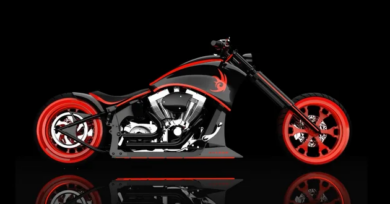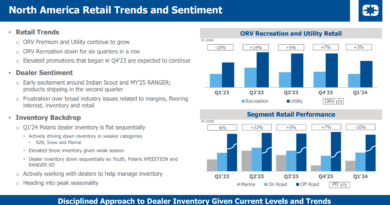OPINION – Dealing with an aftermarket anxiety
It was a conversation about Chinese manufacturing, of all things, that eased my mind about the state of the aftermarket industry.
Two distributor shows held on consecutive weeks in August showed how much of the industry, which is so dependent on technological advancements, relies on an old-fashioned business system: Pipe the product from manufacturer to distributor to dealer and hope those three parties do enough to lure the consumer to the dealership.
It’s the same approach that was used decades ago when we were dealing with a vastly different consumer base. Then it was the newspaper-dependent, network TV-watching shopper. Now it’s the Web-savvy, cell-phone toting consumer.
Clinging to tried-and-true growth techniques in a changing world is a scary paradox, and it makes me wonder if we’re all trying to gain ground by walking up a descending escalator.
On the same day Western Power Sports President Craig Shoemaker talked about the company’s growth through traditional means, a sales rep electronically beamed a bunch of business cards into his Palm Pilot, while walking WPS’ show in Boise, Idaho.
A little more than a week later it was LeMans Founder Fred Fox asserting a traditional mantra — “We’re betting on the dealers” — while just hours later a vendor at the LeMans Showcase in Madison, Wis., was wondering how he would present his products because his computer’s mouse wasn’t working.
Does that mean WPS and LeMans are companies stuck in yesteryear? Certainly not. Each company has registered impressive growth and their leaders effectively communicated that in their respective manners.
It’s this paradox of fitting the new (a changing consumer) with the old (same distribution pattern) that’s troubling and makes me wonder if the industry is changing enough to meet the end user’s demands. We are seeing impressive new warehouses being built that will lead to faster response times, but will that be enough to keep the traditional distribution system thriving as online sales continue to soar?
Although Internet sales still make up only a portion of overall U.S. retail sales, they’re growing quickly. In fact for the first quarter of 2006, online sales grew three times faster than retail sales in the United States, according to the Department of Commerce. And those same statistics show e-commerce sales have grown 97 percent in the past three years.
It gets even more troublesome if you look at the top online retailers and their performances. In 2005, 14 companies recorded online retail sales of $1 billion or more compared to just eight the prior year, according to www.internetretailer.com. Plus, of the 500 companies ranked in that Web site’s Top 500 Guide, the Web-only merchants grew online sales faster than anyone else at 49 percent, nearly double the market rate.
The menacing shadow the Internet is throwing on the industry’s traditional distribution pattern is not being ignored, of course. In fact, 54 percent of powersports dealers view intensifying competition from Internet-based retailers as a growing concern, according to a recent Powersports Business magazine national survey.
It’s a concern that came to my mind after walking two aftermarket shows in consecutive weeks. But that distressing thought shifted somewhat after talking with one of the vendors at the LeMans Showcase.
The vendor was relating his difficulties in getting quality product from his Chinese manufacturers. What was the problem, I asked.
“They don’t get it,” he responded.
“They don’t get what?”
“They don’t get that we care about the little things.”
And that’s precisely what will save this industry and others that rely on this traditional distribution pattern from slipping too far down the online slope.
We care about the little things. We care what it looks like. We care what it feels like. We care enough, or at least most of us do, to get off our computer chair, find our car keys and drive to the nearest dealership to see just what the latest product feels like. How it fits. How it functions.
We care about the little things.
It’s a thought that has been documented in other industries as well. NPD Group, a retail information company, reported 56 percent of laptops sold to consumers in the first quarter of this year were bought in a store, up from 50 percent two years ago.
So the proof that we’re still a “touchy-feely” culture is there, as is the feeling that most of the traditional distribution tenets the industry lives off will continue to prosper. But let’s hope it continues to evolve so there’s more infusion of the new with the old, thus allowing the scary paradox feelings to subside as quickly as the sore feet do.
Send your comments or questions to Powersports Business Editor Neil Pascale at npascale@ehlertpublishing.com




